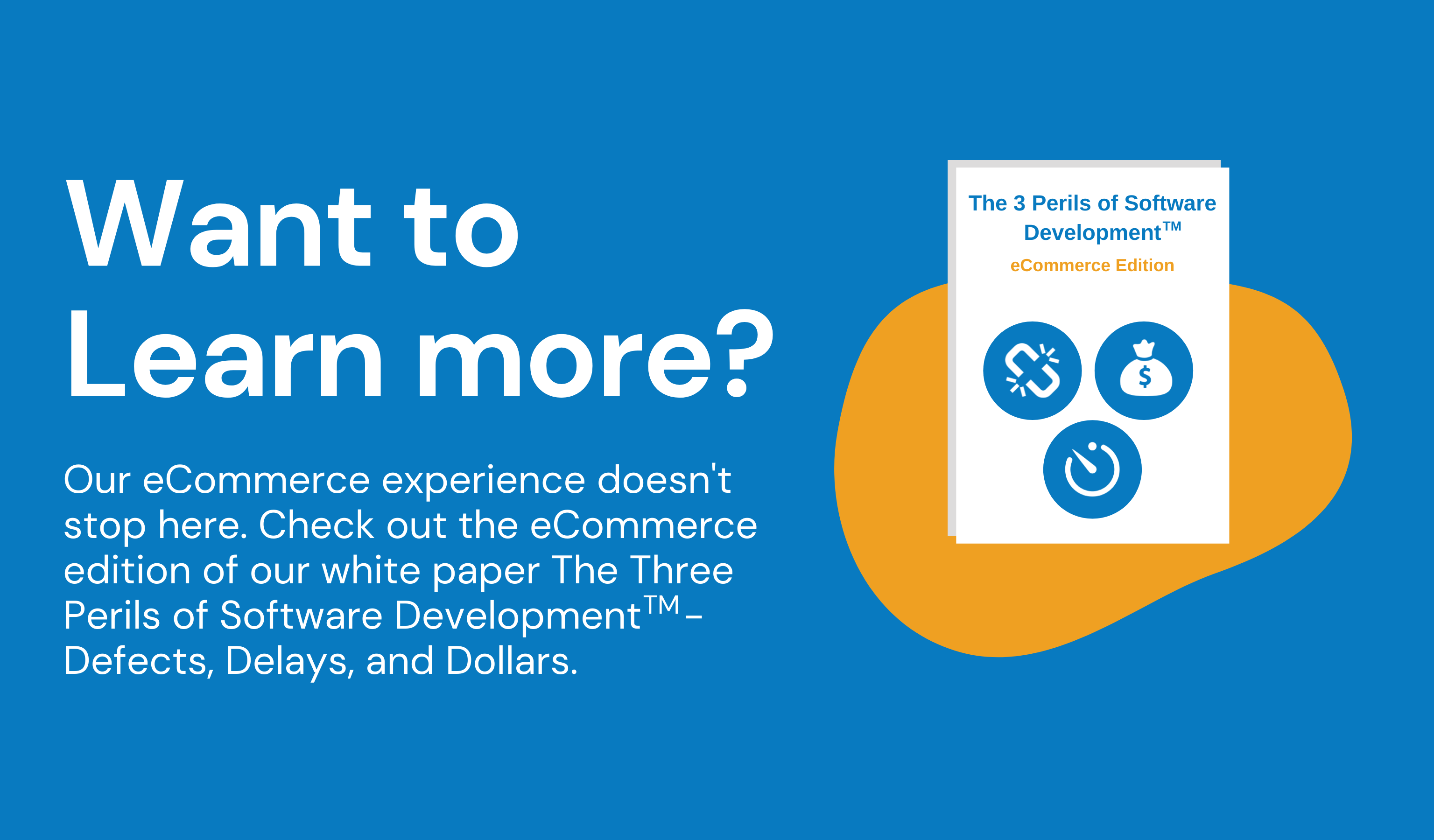Below are 7 common problems we find with our eCommerce clients; we hope our solutions help you avoid these issues.
Consistency between the online and back-end systems
Providing a seamless and simple customer experience is of the utmost importance. Keeping things seamless can be challenging when your online and in-store POS systems aren’t in sync. Additionally, if you have multiple stores, we’ve seen the eCommerce system get “stuck” (>20 second response times) trying to determine inventory levels as a result of issues in the order management and fulfillment systems.
Understanding how and when your systems talk to each other is critical to that seamless experience. Solution – If you realize your order management system makes mistakes or locks up especially during peak demand, consider an architecture review.
Searching vs. Browsing
Picture this: A customer goes online looking to buy a candle. They’re browsing around the website and see an image that shows “Brown Sugar & Vanilla” on the label of the candle, while the description of the product reads “Cucumber Melon”. Which one is correct? The customer might not know, and as a result, may choose not to purchase at all.
Be sure to double check your inventory online. Are your images large enough so a customer can clearly see what they’re buying? Do the descriptions match the images? Is your pricing correct? Solution – We recommend having another person check for any quality inconsistencies; it’s easy to miss if you’ve been working on it for hours yourself! We recommend they use a traditional QA process — Start by sampling 10% of your online products. If you find no errors, you are done. However, if you find significant errors, you will likely need to review 100% of your online inventory.
Human Error
Smaller stores may not have barcode scanners, which could lead to associates mistaking one product for another in the store. As a result, the inventory is now incorrect online – it’ll show the product that was purchased as available, when it’s really not.
As physical stores start to open back up, you may need to take some extra steps due to adding eCommerce capabilities. Solution – If you’re not ready for an RFID scanner, update your associates on any naming changes in your inventory system, and leave little room for human error. If they are not sure what to do, be sure you have a “Misc.” item that they can enter manually, and suggest they send you a picture of the sold item. Then, you can manually change the inventory online.
Limited Time Sales
You may be thinking about a short sales event to lift the spirits of your customers. Maybe you’re giving them 20% off whatever they purchase, but when they go to the checkout page, it’s actually 40% off. Now your business is out 100% more than expected! The scenario just described is exactly what happened to one of our customers.
There’s a lot of complexity to coding the business rules that go into making sales in your online store. If they’re not tested thoroughly, they often break. Solution – Have one associate setup the sale and have another test it to verify it does exactly what you want. For complex eCommerce solutions, these tests can be quite extensive, and you might need a professional testing organization.
Search Return Errors
As mentioned before, customers expect a seamless experience with eCommerce. So, when they search on your site for something, they expect to get that thing in return. Unfortunately, that’s not always the case. We’ve seen it with nearly all of our eCommerce customers – searching often returns different results than navigating button by button through the site. Most of your customers do not remember exactly what they want. They only remember part of a products title or description.
Solution – Update your product tags to include multiple variations of your product’s name and description.
Foreign Software
Cultures are different from country to country, even between neighboring countries. A real example of this was when a customer of ours in the U.S. wrote software for a Canadian gas station. In the States, no car can hold 100 gallons of gasoline, but in Canada, cars easily hold 100 liters and the US developers didn’t really know how many liters a car can hold. A bug in their software made it so that once the amount of gas being pumped went over 100, it went back to 1. The customer walked away with 101 liters of gas while only paying for 1 liter!
These types of problems are exasperated with offshore development and testing. Offshore teams often don’t understand the same context as onshore teams, which may lead to a major sacrifice in quality. Solution – Consider using an in-country partner for development and use a separate in-country partner to provide independent testing.
Location
If your store has several locations, you likely have a store locator on your site. The complexity behind searching, using locations, and maintaining an ever-changing list of locations can easily return incorrect results.
Solution – Integrate your locations database as a dynamic web service or have someone regularly monitor that database and manually update your eCommerce site.
Whether you’re new to eCommerce or have been at it for some time, you’re never immune to the above challenges. Luckily, Lighthouse is here to help! Believe us, we hate being sold to, so there’s no pressure! We’re here to give you an edge in maintaining a seamless customer experience, answer any questions you have, and if it makes sense to work together, then great! If not, then maybe we’ve been able to help you just a bit on your way toward eCommerce success.







